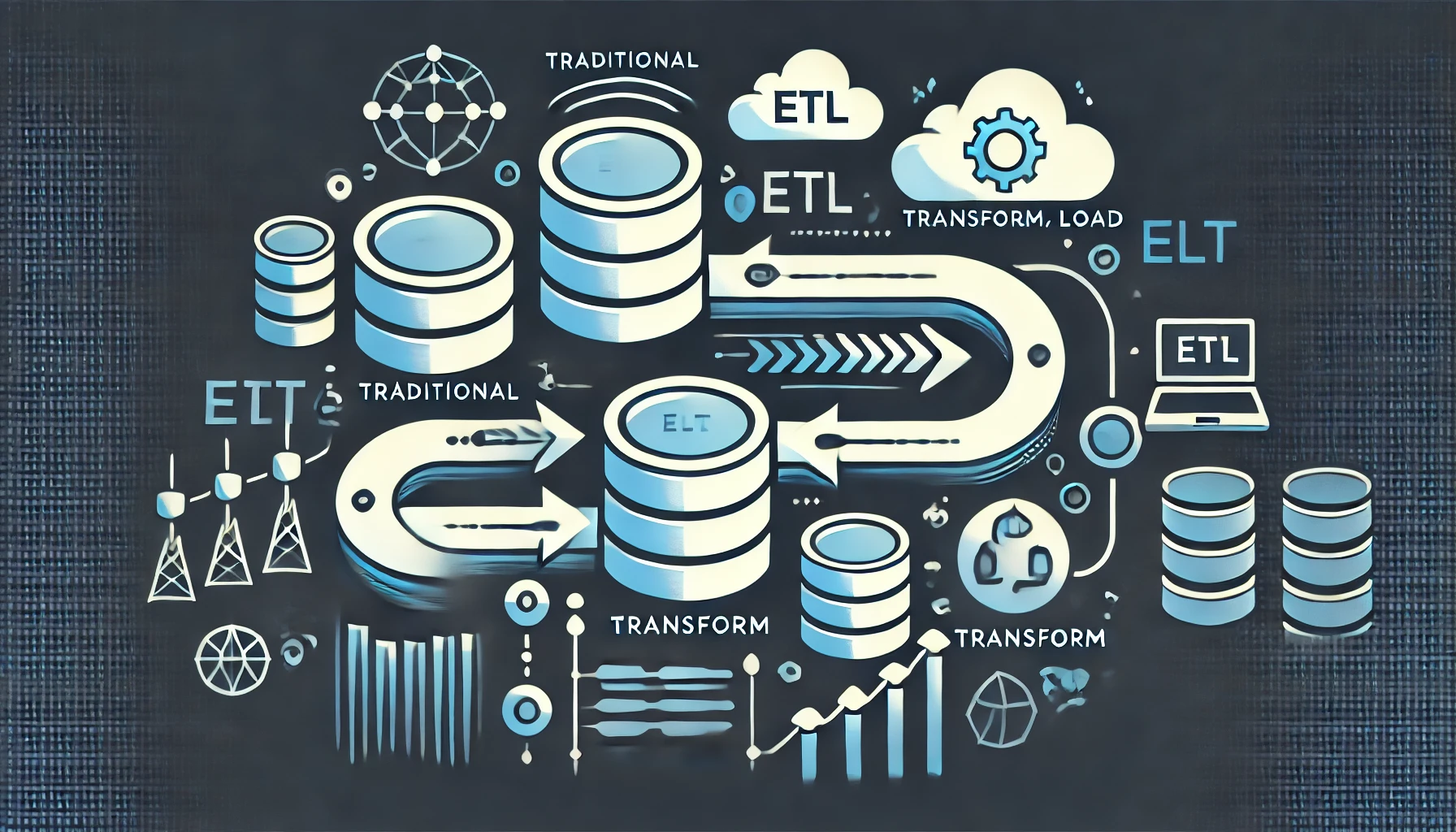
Nowadays, businesses are collecting information more quickly than ever. But raw data is just a collection of bits and bytes. To unlock its true potential and gain valuable insights, business intelligence (BI) tools are crucial. BI relies on a smooth data transformation process to convert raw data into a usable format for analysis.
This is where two key methodologies come into play: ETL (Extract, Transform, Load) and ELT (Extract, Load, Transform). Understanding these approaches and their nuances can significantly impact your business intelligence efforts.
What is Business Intelligence?
Before diving into ETL and ELT, it’s essential to understand what business intelligence (BI) is. Business intelligence involves using strategies and tools to analyze business data. These tools give companies insights into their past, present, and future operations. Business intelligence (BI) is a broad term encompassing the strategies, technologies, and practices used to gather, analyze, and interpret data. BI empowers businesses to make data-driven decisions, identify trends, and gain a competitive edge. At the heart of BI lies the data transformation process, which takes raw data from various sources and prepares it for analysis.
According to a report by Gartner, 87% of organizations consider data analytics to be a critical factor for business success. Moreover, companies that use data-driven decision-making are 5 times more likely to make faster decisions than their competitors.
What is ETL?
ETL stands for Extract, Transform, Load. It’s a traditional data transformation approach where data is extracted from various sources, transformed to a consistent format, and then loaded into a target system like a data warehouse. ETL involves upfront schema definition, ensuring the data structure aligns with the intended use. This approach offers several advantages:
- Reduced Storage Requirements: By transforming data before loading, ETL can eliminate redundant information and reduce storage needs in the target system. According to Forrester, organizations can save up to 20% on storage costs with an efficient ETL process.
- Improved Data Quality: Transformations within the ETL process can clean, validate, and standardize data, ensuring high-quality information for analysis. Studies show that organizations with robust data quality programs achieve up to 20% higher profitability and 12% higher revenue growth.
- Enhanced Performance for Predefined Queries: With a pre-defined schema, ETL optimizes data retrieval for specific, well-understood queries. A survey by TDWI found that 74% of organizations report improved performance and faster query response times with ETL.
However, ETL also comes with some limitations:
- Complexity for Large Datasets: ETL processes can become complex and time-consuming with large datasets. A report by IDC indicates that 60% of enterprises struggle with ETL complexity as data volumes increase.
- Limited Flexibility for Evolving Needs: ETL processes can be rigid, making it challenging to adapt to changing business requirements.
What is ELT?
ELT, or Extract, Load, Transform, offers a different approach. In ELT, data is first extracted from various sources and then loaded directly into the target system, often a data lake. Transformations then occur within the data lake itself. ELT offers several advantages:
- Flexibility for Evolving Needs: Since data resides in its raw form initially, ELT allows for more flexible transformations as business requirements shift. A report by McKinsey highlights that 78% of organizations with ELT processes report increased agility in handling new data requirements.
- Scalability for Big Data: ELT excels with large datasets as the raw data is readily available for analysis without upfront transformation bottlenecks. According to a study by IBM, 65% of enterprises choose ELT for their big data needs due to its scalability.
- Cost-Effectiveness: With cloud-based data lakes offering on-demand scalability, ELT can be a cost-effective solution for storing and processing large volumes of data. Forrester’s research shows that cloud-based ELT solutions can reduce data processing costs by up to 30%.
However, ELT also has some drawbacks:
- Potential for Data Quality Issues: Raw data in data lakes may require additional cleaning and validation post-load.
- Increased Processing Power for Transformations: ELT may require significant computational resources for transformations, potentially impacting performance.
Choosing Between ETL and ELT:
Aspect | ETL | ELT |
Definition | Extracts data, transforms it before loading. | Extracts data, loads it into the warehouse, then transforms it. |
Process Flow | Extract → Transform → Load | Extract → Load → Transform |
Transformation Location | Data transformed on an intermediary server. | Data transformed within the target data warehouse. |
Data Volume Handling | May struggle with very large data volumes. | Efficiently handles large data volumes. |
Real-time Processing | Less suited for real-time processing. | Better suited for real-time processing. |
Scalability | Limited scalability due to intermediate steps. | Highly scalable due to cloud-based data warehouses. |
Flexibility | Less flexible; transformation logic fixed pre-load. | More flexible; transformation logic can be adjusted post-load. |
Data Availability | Data available for querying post-transformation. | Data available for querying immediately post-load. |
Performance | May have performance bottlenecks during transformation. | Leverages data warehouse capabilities for faster transformation. |
Complexity | Higher complexity due to multiple steps and tools. | Lower complexity with fewer steps and integrated tools. |
Batch Processing | Well-suited for batch processing. | Can handle batch processing but excels in real-time scenarios. |
Error Handling | Errors in transformation require re-extraction. | Errors in transformation can be corrected without re-extraction. |
Data Integration | Integrates structured data effectively. | Integrates both structured and unstructured data effectively. |
Adaptability to Cloud | Adaptable but requires more setup. | Naturally aligned with cloud-native environments. |
Streamlining the Data Transformation Process
Knowing the differences between ETL and ELT is necessary for streamlining the data transformation process. Here are some ways in which ELT can enhance data workflows:
- Scalability: ELT leverages the scalability of cloud-based data warehouses, enabling organizations to process vast amounts of data without the bottlenecks associated with traditional ETL tools. According to a report by Snowflake, companies using cloud-based ELT solutions experience up to 50% faster data processing times.
- Flexibility: ELT allows for more flexible and agile data processing. Since data is loaded before transformation, organizations can adjust their transformation logic as needed without re-extracting data.
- Real-time Processing: ELT is better suited for real-time data processing. With ETL, transformations can delay data availability, whereas ELT’s approach ensures data is quickly accessible for analysis. The latest research from Databricks shows that 62% of companies that adopted ELT have improved their ability to perform real-time analytics.
- Cost Efficiency: By utilizing the computational resources of cloud data warehouses, ELT can be more cost-effective, reducing the need for separate ETL infrastructure. The cost benefits of ELT can be substantial, with organizations saving up to 40% on data processing costs according to a study by AWS.
Wrapping Up:
By understanding the data transformation process through ETL and ELT, businesses can unlock the true potential of their data for business intelligence. Choosing the right approach depends on your specific needs and data landscape. Whether you opt for ETL, ELT, or a hybrid approach, streamlining your data transformation process is essential for gaining valuable insights and driving data-driven decision making.

Bhawana Khater
Co-founder/Director
Creating Impact at the Intersection of Data, Consumer & Tech since 15 Years






